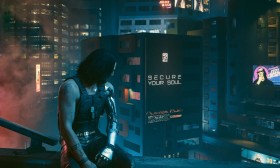Is Fire Emblem: Path of Radiance a JRPG with 3D Graphics?
To answer the question posed in the title—Is Fire Emblem: Path of Radiance a JRPG with 3D graphics?—the immediate and unequivocal answer is yes. However, this seemingly straightforward affirmation belies a more complex and fascinating reality. The true inquiry is not about a binary classification, but rather an exploration of how the game utilizes its 3D graphical capabilities to serve, enhance, and sometimes subtly challenge the core tenets of the Japanese Role-Playing Game (JRPG) genre. Released in 2005 for the Nintendo GameCube, Path of Radiance stands as a pivotal moment in the esteemed Fire Emblem series, representing its first leap into a fully three-dimensional polygonal world. This transition was not merely a cosmetic upgrade; it was a deliberate artistic and mechanical evolution that both honored the series' deep strategic roots and expanded its narrative and emotional palette.
To understand its place in the genre, one must first define the essential characteristics of a JRPG. While a rigid definition is elusive, common hallmarks include a strong, character-driven narrative, a party-based progression system, a turn-based (or tactical) combat system, and a distinct separation between exploration/overworld segments and battle sequences. By these metrics, Path of Radiance fits comfortably within the genre, albeit in its specific tactical JRPG (or SRPG) sub-category. Its story of Ike, a humble mercenary rising to lead an army against a continent-spanning empire fueled by racial prejudice, is classic JRPG fare. Its gameplay is built upon the series' foundational grid-based, turn-combat system where permanent death (permadeath) for units adds immense weight to every decision. Therefore, the question is not if it is a JRPG, but how its new 3D presentation impacted the experience of that JRPG.

The most apparent impact of 3D graphics was on the battlefield itself. Prior to Path of Radiance, the series, notably with The Blazing Blade and The Sacred Stones on the Game Boy Advance, had perfected a charming and functional 2D sprite-based aesthetic. The transition to 3D allowed for a significant enhancement in tactical clarity and visual dynamism. The isometric battlefields gained a tangible sense of depth and scale. Elevation changes, previously denoted by simple tile color variations, became actual sloping hills and cliffs, making the tactical advantages of high ground feel more intuitive and physically real. Forests were no longer flat clusters of green pixels but dense, three-dimensional groves that visually explained why a unit hiding within them would be harder to hit.
Furthermore, the shift to 3D revolutionized the presentation of combat animations. In 2D entries, critical hits were often spectacular displays of fluid sprite work, but they were confined to a separate screen. In Path of Radiance, battles unfold directly on the main map. When a unit engages an enemy, the camera dynamically zooms in, circling the combatants and showcasing detailed, impactful animations. A Knight's "Lance Jab" feels heavy and direct, while a Myrmidon's critical hit, "Astra," becomes a breathtaking flurry of blows. This cinematic approach did not change the underlying probability-based calculations, but it profoundly enhanced the player's emotional investment. Each unit was no longer just a collection of stats on a map; they were visualized as individual combatants with unique fighting styles. The death of a unit, a core tenet of Fire Emblem, carried greater emotional weight when you had just watched your armored knight, Oswin, valiantly block an axe blow in a detailed, close-up animation, only to fall to a subsequent attack.
However, it is crucial to note that Path of Radiance’s use of 3D was remarkably restrained and pragmatic, especially when compared to other contemporary JRPGs on more powerful hardware like the PlayStation 2. Games like Final Fantasy X or Kingdom Hearts used 3D to create vast, explorable worlds with free-moving cameras. Path of Radiance did not adopt this model. Outside of battle, the game largely retains a structure familiar to its 2D predecessors. The world map is a static, 2D illustration where players move a cursor between nodes representing towns, castles, and battlefields. The "base" between chapters, where players manage inventory, promote units, and build support conversations, is a menu-driven interface with static 2D character portraits. The game deliberately avoids creating a fully explorable 3D overworld.
This design choice is not a limitation but a deliberate affirmation of its genre priorities. Path of Radiance is, at its heart, a game about strategic planning and narrative progression. The developers understood that a free-roaming 3D world would add little to the core tactical loop and might even dilute the focused, chapter-based pacing of the story. The 3D elements were deployed specifically where they had the most significant impact: on the battlefield. This selective use of technology highlights a key aspect of the JRPG genre—it is not defined by technological prowess but by how technology is harnessed to serve its distinctive blend of story, character, and system-driven gameplay. In this sense, Path of Radiance is a masterclass in purposeful design.
Beyond the battlefield, 3D graphics subtly enhanced the game's narrative and world-building. While exploration segments were limited, key story moments were given greater gravitas through 3D cutscenes. The opening cinematic, showing the invasion of Crimea, immediately establishes a scale and seriousness that was harder to achieve with sprite-based animations. The design of characters like the laguz—a race of shapeshifters including cat-people (cat laguz), bird-people (hawk laguz), and dragons (dragon laguz)—benefited immensely from 3D models. Their transformations and bestial forms felt more integrated and believable within the game world, reinforcing the central theme of racial tension between the laguz and the human beorc.
In conclusion, Fire Emblem: Path of Radiance is unequivocally a JRPG, and its 3D graphics are an integral, thoughtfully implemented component of its identity. The transition was not a mere following of industry trends but a calculated evolution that strengthened the series' foundational pillars. It leveraged 3D to create more tactically intuitive and emotionally resonant battles, using cinematic camera work and detailed animations to deepen the player's connection to their army. Simultaneously, its restrained application of 3D outside of combat demonstrated a clear understanding of its genre's strengths, prioritizing streamlined menu navigation and a focused narrative over unnecessary open-world exploration. Path of Radiance stands as a testament to the idea that technological advancement in games is most successful when it is in service of the core experience. It didn't use 3D to become a different kind of game; it used 3D to become a better, more immersive, and more compelling version of the tactical JRPG it always was.














